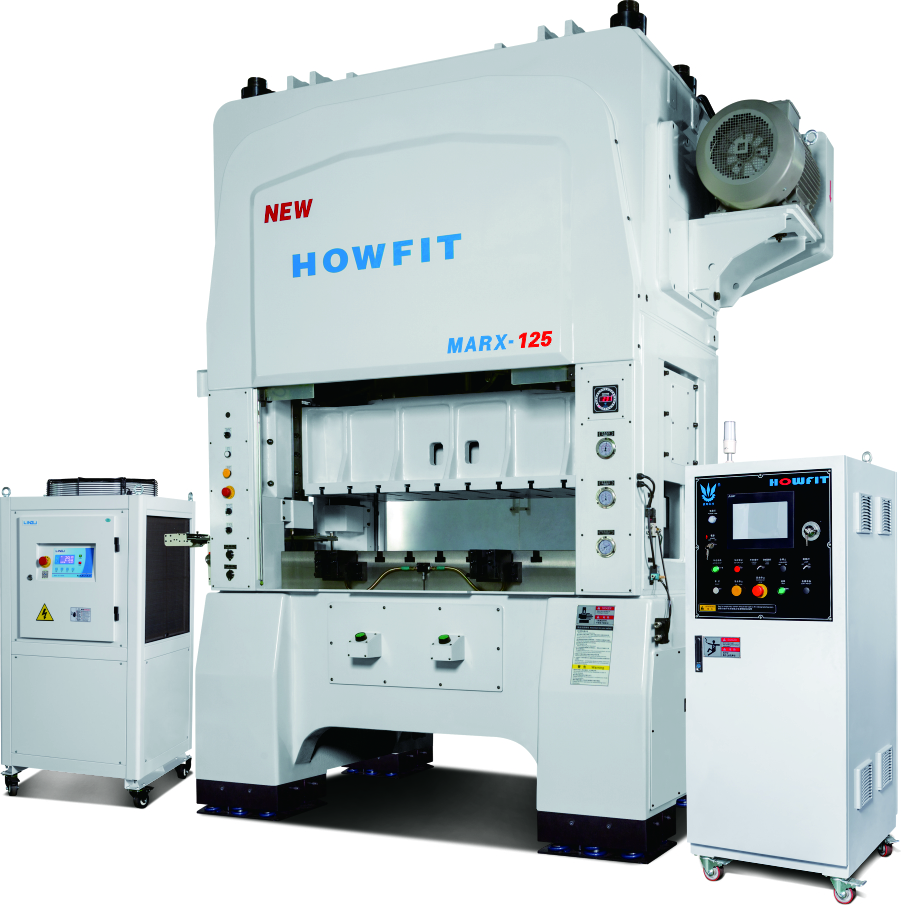HOWFIT Knuckle high-speed precision presses are engineered to achieve a high degree of precision and efficiency. This section dives into its engineering and benefits.
High-speed and high-precision implementation
Knuckle-type high-speed precision presses are able to work at high speeds and with high precision, in part because of their engineering design. These punch presses usually use a rigid machine tool base and a high-precision guide rail system to ensure the stability and accurate motion trajectory of the slider. In addition, the high-performance motor and control system allow the punch press to complete multiple impact cycles in a short time, thereby achieving high-speed production.
Challenges and breakthroughs in design engineering
Designing a knuckle-type high-speed precision punch press presents several challenges. One of the challenges is maintaining stability and avoiding vibration and distortion when operating at high speeds. Engineers solved this problem by optimizing structure and material selection to ensure that the punch machine maintains high accuracy when punching at high speeds.
Another challenge is how to handle the mechanical stress caused by high impact forces. The engineering design of punch presses needs to consider the durability and strength of materials to handle repeated high stresses. Breakthroughs in materials engineering and structural design allow punch presses to withstand high impact forces without being easily damaged.
Comparison with traditional punch press
Compared with traditional punch machines, knuckle-type high-speed precision punch machines have significant advantages in accuracy, speed and efficiency. Traditional punch presses are generally better suited for machining lower speeds and rougher workpieces, while knuckle-type high-speed presses can complete more complex and delicate work. In addition, due to the use of automatic control systems, operations are easier and the need for manual operations is reduced.
In terms of engineering design, the knuckle-type high-speed precision punch press pays more attention to the improvement of stability and accuracy, which makes it suitable for production environments that require high precision and efficiency, such as automobile manufacturing, electronic equipment manufacturing, and medical equipment manufacturing.
Part 3: Application cases of knuckle-type high-speed precision punches
Knuckle-type high-speed precision punches are widely used in various manufacturing fields. Here are some practical examples:
Applications in automotive manufacturing
In automobile manufacturing, high-speed punching machines are used to produce automobile parts such as body and interior parts. These presses can quickly produce large quantities of parts while maintaining high precision to ensure automotive quality and production efficiency.
Applications in electronic equipment manufacturing
In electronic equipment manufacturing, high-precision components are crucial. Knuckle-type high-speed precision punching machines are used to manufacture housings, conductive parts and connectors for electronic equipment. These punching machines can process small-sized and high-precision workpieces to meet the requirements of electronic equipment.
Applications in Medical Device Manufacturing
Medical devices often require highly precise components to ensure safety and reliability. Knuckle-type high-speed precision punches are used to manufacture components for medical devices such as surgical tools, implants and diagnostic equipment.
Specific case analysis and benefits
Let’s consider a specific case: an auto parts manufacturer introduced a knuckle-type high-speed precision punch press to manufacture parts for car door locking mechanisms. By using these punches, they are able to significantly increase production speed while maintaining high precision. This results in significant improvements in production efficiency, reduced scrap rates, and ultimately lower production costs.
In this case, the knuckle-type high-speed precision punch not only improves product quality, but also improves manufacturing efficiency and brings economic benefits to the company.
In the next part of the article, we will discuss the future development trends of punch press technology and the importance of engineering technology in manufacturing. This will help us better understand the prospects and key position of knuckle-type high-speed precision punching machines in the manufacturing industry.
Post time: Nov-07-2023

![MARX-80T-W-Knuckle-Type-High-Speed-Precision-Press[1]](https://www.howfit-press.com/uploads/MARX-80T-W-Knuckle-Type-High-Speed-Precision-Press1-300x300.jpg)
